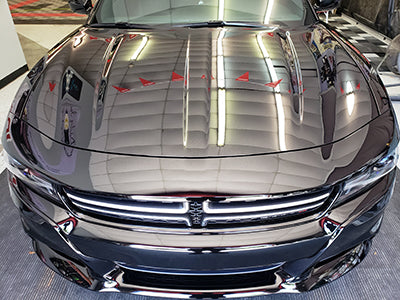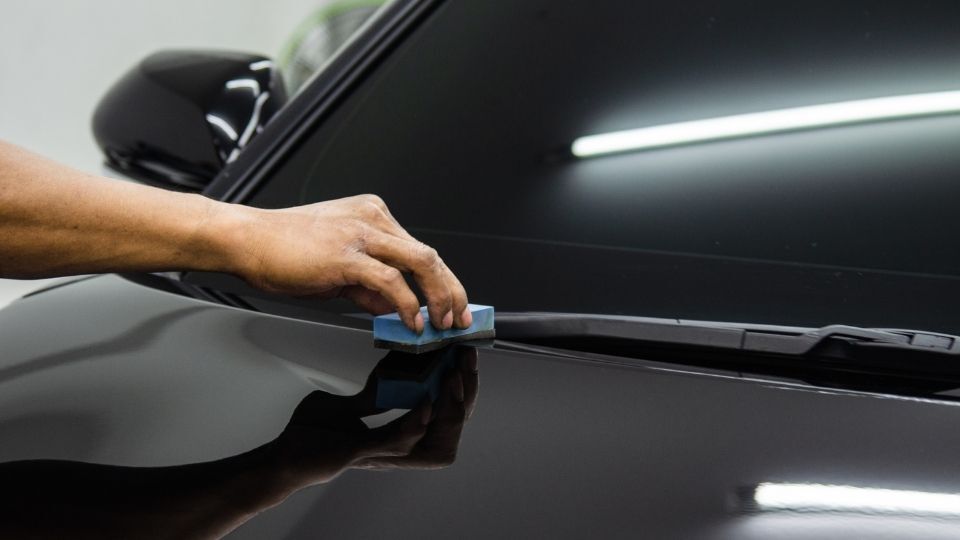How Ceramic Coating Enhances Your Vehicle's Protection and Appearance
How Ceramic Coating Enhances Your Vehicle's Protection and Appearance
Blog Article
Ceramic Finish vs. Standard Wax: Which Provides Better Long-Term Protection?
The discussion between ceramic layers and standard wax for lorry protection has amassed significant attention among vehicle lovers and experts alike. While both satisfy of safeguarding paint, their differences in toughness, application, and lasting upkeep prices might affect a customer's option. Ceramic layers boast superior long life and resistance to ecological aspects, yet the complexity of their application questions about accessibility and practicality. As we explore these contrasting options, it ends up being necessary to think about not only the immediate advantages however additionally the ramifications for lorry treatment with time.
Introduction of Ceramic Coating
Ceramic coating has acquired considerable appeal amongst automotive enthusiasts and detailers alike due to its advanced safety high qualities. This ingenious innovation is made to produce a durable, hydrophobic guard over an automobile's paint surface, dramatically enhancing its resistance to ecological pollutants such as dust, UV rays, and chemical stains. Unlike standard wax, which provides a momentary layer of protection, ceramic finishes bond at a molecular degree with the paint, using durable toughness-- often prolonging past 2 years with proper upkeep.
The application procedure entails careful preparation of the car's surface, consisting of cleansing and polishing to make sure optimum attachment. Once used, the finishing treatments to form a robust layer that not just includes deepness and gloss to the paint however additionally simplifies maintenance. With its hydrophobic residential or commercial properties, ceramic layer enables water and dirt to slide off more easily, lowering the regularity of laundries and reducing the threat of swirl marks.
In addition, ceramic layers are offered in various formulations, allowing individuals to pick items tailored to their particular demands and preferences. In general, ceramic finishing represents a significant innovation in paint protection modern technology, delivering superior efficiency compared to conventional options.
Introduction of Typical Wax
Commonly considered a staple in vehicle treatment, wax acts as a popular selection for those looking for an uncomplicated approach to enhance and safeguard their automobile's paint - ceramic coating. Automotive wax typically consists of all-natural components, such as carnauba, or synthetic substances, designed to develop a safety layer on the surface of the paint. This layer not only boosts the vehicle's gloss and radiate but also offers an obstacle versus environmental impurities
The application of wax is usually easy to use, making it easily accessible for both professionals and DIY fanatics. It can be applied by hand or machine, permitting for convenience in the outlining process. When used, wax needs a healing duration, after which it sets to create a safety covering. Wax is additionally known for its capability to ward off water, advertising a beading impact that aids in the prevention of water places and corrosion.
However, while wax works for improving the aesthetic allure of a vehicle, it is crucial to keep in mind that the protection it provides might necessitate much more constant reapplication compared to different products, such as ceramic coatings. In general, traditional wax remains a popular choice for those focusing on convenience of usage and prompt aesthetic improvement.
Toughness and Longevity Comparison
While both ceramic layers and typical wax deal protective advantages for automotive paint, their toughness and durability differ substantially. Typical wax, commonly made from natural carnauba or synthetic polymers, generally provides a protective layer that lasts roughly three to 6 months. This fairly short life expectancy requires routine reapplication to preserve optimal protection.
In comparison, ceramic coatings are engineered from advanced nanotechnology, forming a covalent bond with the paint surface. This results in a robust, hydrophobic layer that can endure for two to five years, depending on the product and environmental problems. The superior longevity of ceramic layers is credited to their chemical structure, which provides enhanced resistance to scrapes, UV rays, and oxidation.

Security Against Environmental Factors
Securing an automobile's paint from ecological variables is vital for maintaining its look and value over time. Autos are regularly subjected to a range of elements, consisting of UV rays, bird droppings, tree sap, acid rainfall, and road grime, all of which can compromise the stability of the paintwork.
Ceramic layers offer a durable defense versus these ecological aggressors. Unlike standard wax, which can weaken rapidly under UV direct exposure, ceramic finishings create a resilient, hydrophobic layer that resists the unsafe impacts of sunlight and ecological toxins. This advanced technology produces a chemical bond with the vehicle's surface, supplying premium security that lasts for many years, even in harsh conditions.
Standard useful site wax, while simpler reference to apply, generally calls for frequent reapplication and uses minimal resistance to pollutants and UV rays. Over time, it can damage down, leaving the paint vulnerable to scratches and oxidation. On the other hand, ceramic coverings keep their safety top qualities longer, substantially decreasing the threat of paint damages and guaranteeing that the car preserves its visual charm. Because of this, ceramic layers are increasingly identified as the superior option for long-lasting protection against ecological aspects.
Application and Upkeep Differences
The techniques of application and subsequent upkeep for ceramic finishings and standard wax differ significantly, influencing the general customer experience and effectiveness of each item. Ceramic finishings require an even more elaborate application procedure, normally including surface preparation that includes cleaning, sanitizing, and polishing the vehicle. When the surface area prepares, the ceramic finishing is used in a regulated setting, often requiring expert know-how to make certain correct healing and bonding to the paint.

While both products enhance lorry appearance, the longer-lasting security supplied Get More Information by ceramic finishings might warrant their first investment, regardless of the even more requiring application procedure. Alternatively, typical wax remains a popular choice for those seeking a simpler, albeit short-term, option.

Verdict
In conclusion, ceramic coatings show considerable advantages over traditional wax in regards to durability and ecological protection. With a life-span prolonging 2 to 5 years and remarkable resistance to UV rays, dust, and chemical stains, ceramic finishings provide a much more reliable solution for lasting car maintenance. The application process might call for professional experience, the resulting price financial savings and decreased frequency of reapplication emphasize the value of ceramic layers for those seeking optimal automobile defense.
The dispute in between ceramic finishings and standard wax for vehicle protection has actually amassed considerable interest amongst vehicle fanatics and experts alike. Unlike conventional wax, which provides a momentary layer of defense, ceramic coatings bond at a molecular degree with the paint, using long-lasting resilience-- usually expanding past 2 years with proper maintenance.
While both ceramic layers and standard wax deal protective benefits for vehicle paint, their toughness and long life differ significantly. For car lovers looking for lasting protection, ceramic finishings offer an engaging benefit over traditional wax items.
In verdict, ceramic finishes show significant advantages over conventional wax in terms of toughness and ecological security.
Report this page